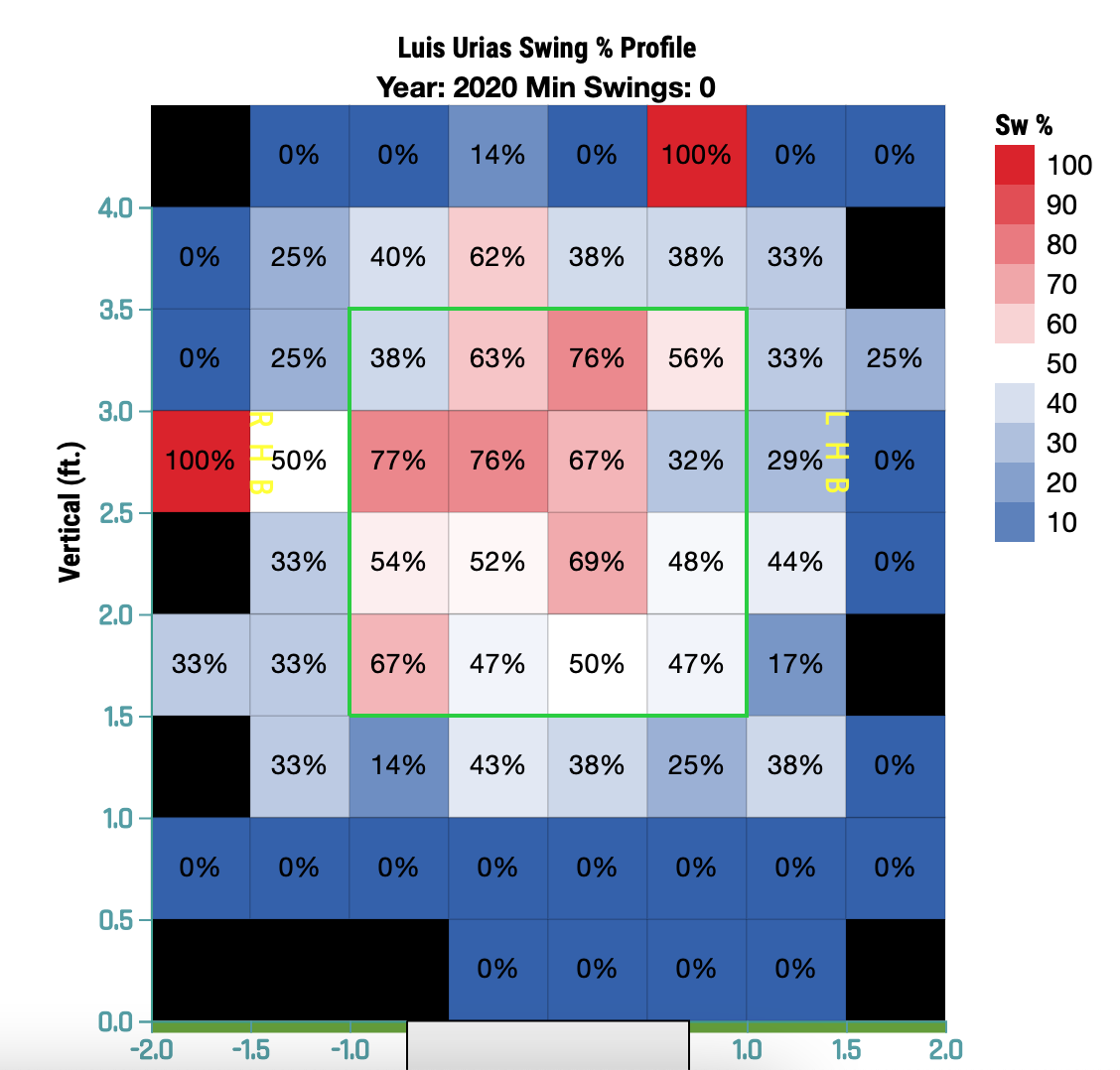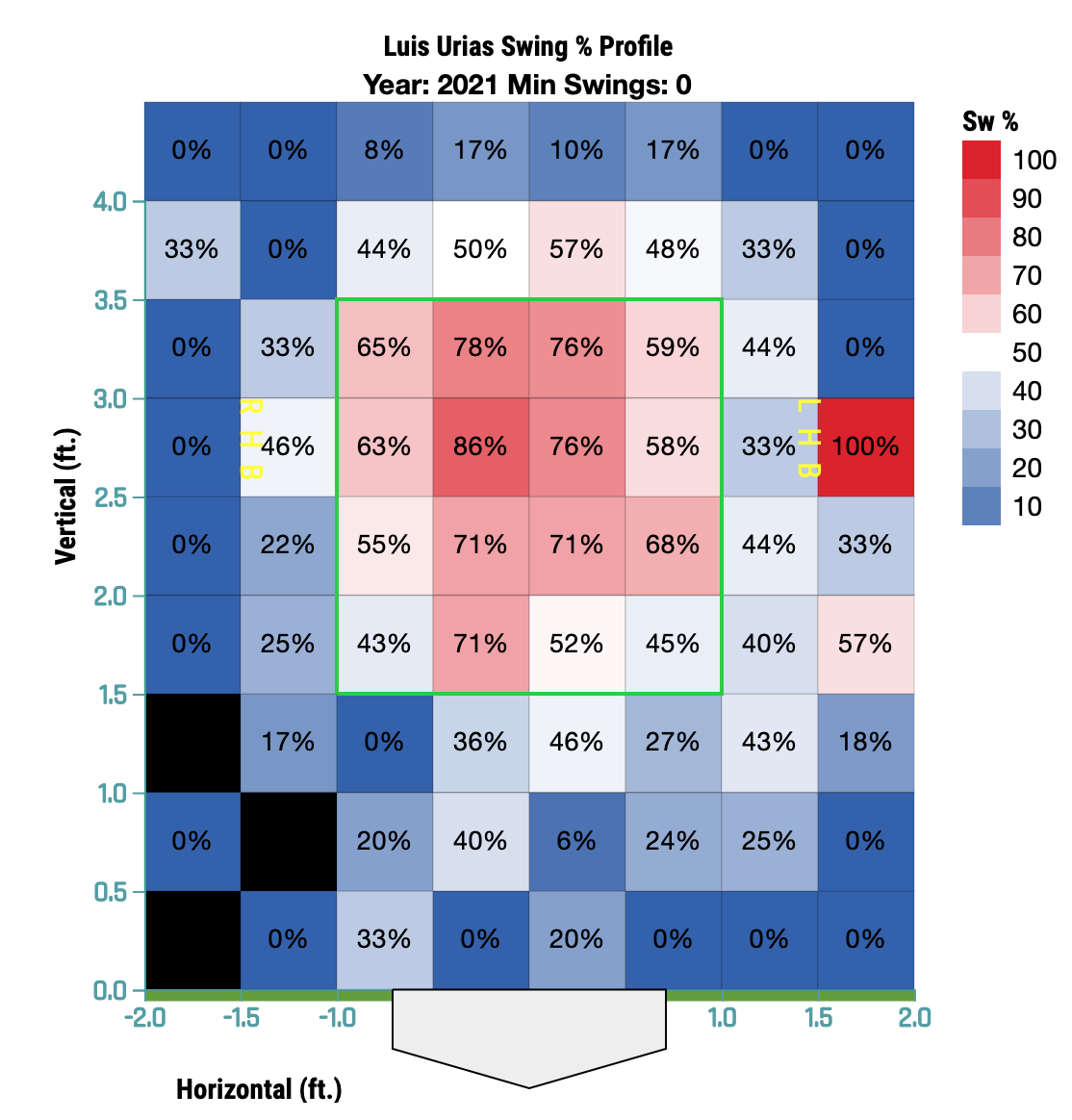Way back in 2018, MLB.com ranked Luis Urías as the fourth-best prospect in all of baseball (first that year was some guy named Fernando Tatís, Jr.). Later that season, Urías was called up for a short 12 game stint with the Padres, and then played a nearly half-season disappointing campaign with the Friars in 2019 before being traded in the offseason to the Brewers in exchange for Trent Grisham and Zach Davies.
The major pieces of the trade obviously were Grisham and Urías. One prominent narrative of the trade was that the Brewers were panicking over Grisham’s high-profile error in the National League Wild Card game against the Nationals, though that wasn’t ever quite right. Each team was dealing for a position of need, with the Brewers seeking assistance with their middle infield and the Padres looking to shore up their outfield.
Since that time, Grisham has become a bona fide star player in San Diego– if perhaps overshadowed by his transcendent teammates. And after Urías slashed just .239/.308/.294 with average defense in his first “full” (though still shortened) season in 2020, it’d be fair to wonder not just if the Brewers would break even on the trade, but if it might be the most lopsided trade in team history.
Urías again started off slowly in 2021, but since June 1 has managed a .263/.344/.475 slash with 8 homers in 180 PA, good for a 121 wRC+. It’s not the superstar level to which Trent Grisham has produced at the plate, but it has, along with the trade for Willy Adames, given the Brewers the elite middle infield combo that they sought initially in the trade.
Urías’ carrying tool has always been his plate discipline. He hasn’t carried a single-digit walk rate in the minors since 2016, and now has his walk rate in 2021 back up to 10.3% while striking out at about a league-average rate. That all has remained fairly consistent, but it’s his power that has really driven his improvement this year.
The big change for Urías has come from the damage he’s been able to do against fastballs. In 2020, his xSLG was just .299 on fastballs, according to statcast. This year that number is up to .464, mostly due to the fact that he’s swinging at strikes in the zone. It’s possible that Urías was being too passive in prior seasons, as he had never swung at more than 60% of pitches in the strike zone before this year. In 2021, he’s swinging at 66% of strikes. Even though he’s making about the same amount of contact on those pitches as his career average, Urías is no longer just letting those pitches go by for called strikes. As a result, he’s been able to trim his strikeout rate by almost 4% while maintaining his excellent walk rate. His 2020 swing rate looks more or less random when compared to that of 2021:


So, you have a 24-year old player who is clearly hitting more strikes while laying off pitches outside the zone. That’s great, but what should excite the Brewers is that there’s reasonable room for growth still.
Clearly, the recognition of strikes at which to swing has been a driver in Urías’ development in 2021. That progress has led to increases in his hard-hit rate, barrel %, sweet spot %, and launch angle this season, all while cutting down on strikeouts. At the same time, Urías’ BABIP is sitting at just .285 on the season.
The power is a bit more of a mixed bag, however. Urías has averaged 87.4 mph exit velocity on his batted balls in his short career and has never strayed more than half a mile per hour in either direction from that in any season. His maximum exit velocity, however, has jumped considerably this season. After having only reached 107 mph, this season he has hit 111 mph, good for the 81st percentile in all of baseball.
Of course, this makes a good deal of sense given what we know about Urías’ approach this season. He’s swinging at more strikes in the zone, which would lead to better pitches being hit and therefore a higher probability of running into a fastball that he can hit harder. Urías’ hard-hit rate is at a career-high 38% (up 11% from last year), but that still places him in just the 36th percentile in baseball. Whether you believe in a potential further power surge from Urías likely depends on whether you believe he can continue to refine that approach to hit strikes down the middle harder. However, even without a significant gain in power above what he’s shown already, Urías’ adjustment to his approach has made him a valuable hitter to this year’s Milwaukee team that has, at times, struggled to score runs.
The Padres aren’t likely to immediately regret the trade, but perhaps it’s unfair if inevitable to judge trades on a player-to-player comparison. A versatile middle or corner infielder that’s regaining the form at 24 that previously made him a top prospect in baseball is valuable to the Brewers now and in the future, and in that regard we can appreciate what Urías is contributing alongside Willy Adames now. And if Urías can further refine his approach as he gets regular plate appearances at the major league level and grow into more power, then the Brewers have potential all-stars in the infield for years to come.
Photos by Nick Wosika/Icon Sportswire, Andrew S/Unsplash, and NASA | Adapted by Ethan Kaplan (@DJFreddie10 on Twitter and @EthanMKaplanImages on Instagram)


Very cool